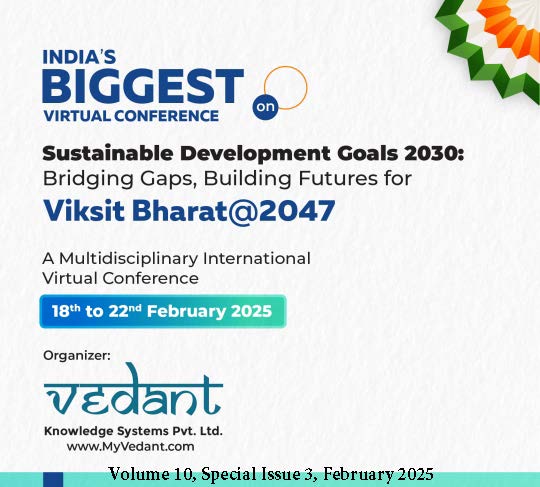Optimizing Cement Efficiency and Cost-Effectiveness: Engineering Solutions Towards Sustainability
DOI:
https://doi.org/10.58213/vidhyayana.v10isi3.2256Keywords:
Carbon Footprint, Climate Change, Efficiency, NET Zero, Paris Agreement, Particle Size Distribution (PSD)Abstract
Cement production is an energy-intensive process that contributes significantly to global CO2 emissions. To address these challenges, there should be improvements in cement quality, demand reduction, and the adoption of sustainable production practices. Considering global variations in raw materials and manufacturing methods, extensive research is required to adjust its chemical and physical properties in order to reduce CO2 emissions.
Cement strength, typically measured by compressive strength, is influenced by factors like fineness and raw material quality. While traditionally assessed by specific surface area, modern LASER diffraction technology allows precise measurement of particle size distribution (PSD). This study demonstrates that engineering PSD alone can enhance cement's strength and durability. By engineering PSD, we can increase cement efficiency, achieving desired strength while reducing overall cement usage. The research exhibits that a 25% improvement in cement efficiency can lead to a 15% reduction in CO2 emissions. These results underline the potential of PSD optimization for achieving significant environmental benefits without compromising construction standards. PSD optimization emerges as a viable strategy to reduce the carbon footprint of the cement industry.
This study thus helps to achieve the objectives of the Paris Agreement of NET zero carbon emissions by maintaining the technical and functional integrity of construction materials.
Downloads
References
ASTMC-778- American Standard specifications for standard sand
ASTM-E 3340-22- Standard Guide for Development of LASER Diffraction Particle Size Analysis Methods for Powder Method.
ASTM-C 124- Method of test for flow of Portland- Cement Concrete by Use of the flow table.
Cormos, C. (2022). Decarbonization options for cement production process: A techno-economic and environmental evaluation. Fuel, 320. https://doi.org/10.1016/j.fuel.2022.123907
Chakurkar (Anawkar), S., & Guptha, K. G. (2023). Optimization of cement quantity through the engineering of particle size distribution – a sustainable approach. Results in Materials, 19. https://doi.org/10.1016/j.rinma.2023.100408
IS:650, Standard Sand for Testing Cement Specification, BIS, Delhi, India, 1991.
ISO 13320, International Organization for Standardisation -Particle Size AnalysisLASER Diffraction Methods, 2020.
IS 5512: 1983 - Specification for flow table for use in tests of hydraulic cements and pozzolanic materials
IS 4031 (Part 4)- Methods of Physical Tests for Hydraulic Cement Determination of Standard Consistency of Cement BIS, Delhi, India.
IS :4031 (Part 5), Methods of Physical Tests for Hydraulic Cement - Determination of Initial and Final Setting Times, BIS, Delhi, India, 1988.
IS 4031 (Part 9)- Methods of Physical Tests for Hydraulic Cement Determination of Heat of Hydration of Cement BIS, Delhi, India.
Maciej Zajac, Gerd Bolte, Skocek Jan, Mohsen Ben Haha, Modelling the effect of the cement components fineness on performance and environmental impact of composite cements, Construct. Build. Mater. ume –276 (2021), 122108.
Neeraja, PG., Unnikrishnan, S., & Varghese, A. (2023). A comprehensive review of partial replacement of cement in concrete. Materials Today: Proceedings. https://doi.org/10.1016/j.matpr.2023.05.070
Nehdi, M. L., Marani, A., & Zhang, L. (2024). Is net-zero feasible: Systematic review of cement and concrete decarbonization technologies. In Renewable and Sustainable Energy Reviews (Vol. 191). https://doi.org/10.1016/j.rser.2023.114169
Obrist, M. D., Kannan, R., Schmidt, T. J., & Kober, T. (2021). Decarbonization pathways of the Swiss cement industry towards net zero emissions. Journal of Cleaner Production, 288. https://doi.org/10.1016/j.jclepro.2020.125413
Pisciotta, M., Pilorgé, H., Davids, J., & Psarras, P. (2023). Opportunities for cement decarbonization. Cleaner Engineering and Technology, 15. https://doi.org/10.1016/j.clet.2023.100667
IS:456-2000 Plain and Reinforced Concrete - Code of Practice, Bureau of Indian Standards (BIS)
IS 10262:2009"Concrete Mix Design - Method of Mix Design for Normal and Structural Concrete" (Second Revision), Bureau of Indian Standards (BIS).
